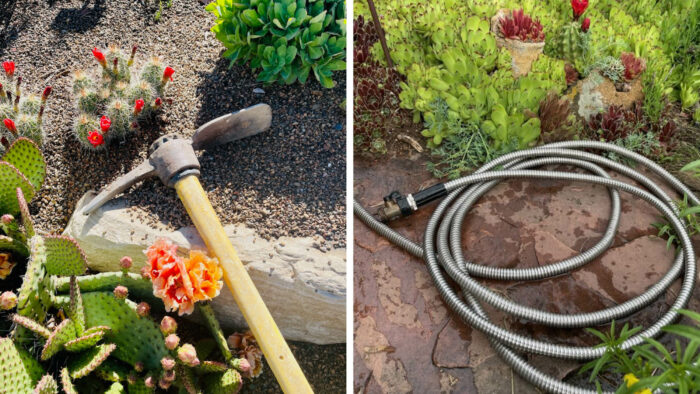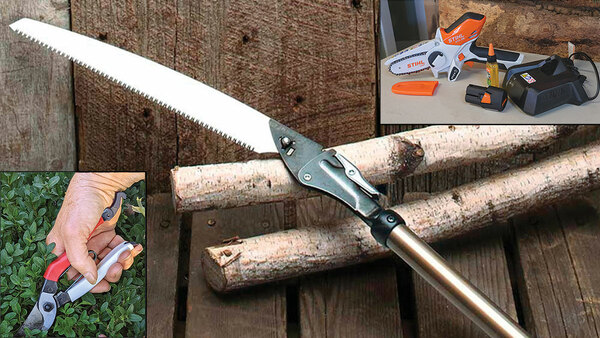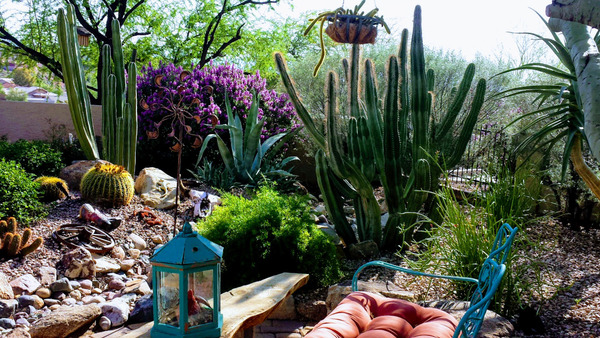
Some people are particular about the garden tools they use. Others take it less seriously and are content with the cheapest things they can find. I’m somewhere in the middle. I’m not one to waste money on overpriced brands, but I do want durable tools that last a good while. Just as important, they need to do the job and be up for the conditions under which I’ll be using them.
It’s common knowledge that gardening in the desert Southwest is different, but it’s not just the climate. The soil and garden styles are different as well. Hard, rocky soil is not uncommon, and pockets of caliche can be found almost anywhere if you dig deep enough. Some areas are sandy or full of gravel with little organic matter. Garden mulch materials are usually inorganic fine gravel, breeze, or crushed rock. Many of our trees are legumes producing an annual crop of “beans” that litter the ground. An abundance of pointy plants requires special handling as well. All these challenges mean a “regular” version of a popular garden tool might not be the best choice for us.
Most common tools need little introduction. I always have a sharp pair of hand pruners at the ready, and always the bypass type, not the anvil type that can crush stems before it cuts. A good pair of nitrile gloves is standard for me. But other tool choices may not be as obvious. Here are some of my top tools that are well-adapted and especially useful as I work to enhance my little piece of the desert:
Hori hori
This is the rugged hand digging tool that works best in my rock-laden soil. It pries small rocks out of the way, is narrow enough to dig deep quickly, and does not bend like cheaper aluminum trowels.
Sharpshooter shovel
A narrow blade will often find its way between obstacles more easily than a wider standard spade, so this shovel is ideal for rocky conditions. It digs deep planting holes for deep-rooted plants and is easier to position as you dig. This shovel can also pry rocks loose along the way.
Knee pads
Kneeling on rocks and gravel hurts, not to mention the occasional thorn or spine! I prefer the thicker type of knee pads with a single wide strap for the best comfort. I avoid the ones with thin foam, and those with a rigid plastic surface that is more likely to compact the soil.
Adjustable metal rake
This is indispensable no matter what climate I garden in. Flexible tines are easier on garden plants than harder plastic rakes. With the proper adjustment, a flexible rake can be used to groom grasses, remove light debris, or rake coarse gravel back to where it belongs.
Cultivator
Hard soil surfaces cause our valuable rains to run off quickly, reducing any benefit to our gardens. Periodically cultivating the soil surface encourages water to soak in, and a loose surface actually helps retain deeper moisture. It’s also a great technique when sowing wildflower seeds. Good cultivators can usually be found as 3- or 4-pronged versions.
Hand rake
A small hand rake is great for cleaning up around extra-pointy plants or tight spaces. This tool is an efficient way to keep leaves and mesquite beans from accumulating around the base of plants.
Large tweezers or ice tongs
This is also a great tool for detailed garden cleaning. They’re truly a must-have when transplanting cactus or dealing with other spiny plants.
Pickaxe
In my garden on the side of a small volcanic mountain, nearly every hole I dig involves the extraction of at least one rock, from tennis ball to football size. Sometimes the quickest method is a swing or two of the pickaxe, which easily pries the rocks aside and avoids the blunt impact of a dull shovel against stone.
Metal garden hose
Dragging a hose through a desert garden has its hazards. I use hose guides where I need them, but an occasional encounter with cactus glochids or agave spines is inevitable. Metal-clad garden hoses have stood up well against these perils, and (as advertised) they don’t kink or wear through during routine use. There are many versions of these out there, but the cheapest ones have not held up. Look for the style with couplings that can be repaired if needed.
I hope adding some of these to your garden toolkit will make your Southwest gardening experience more productive and more enjoyable.
For more expert recommended gardening tools go here.
Dan Johnson lives and gardens in Denver and in Tucson, Arizona. He is an associate director of horticulture for the Denver Botanic Gardens.
Photos: Dan Johnson



























Comments
Log in or create an account to post a comment.
Sign up Log in